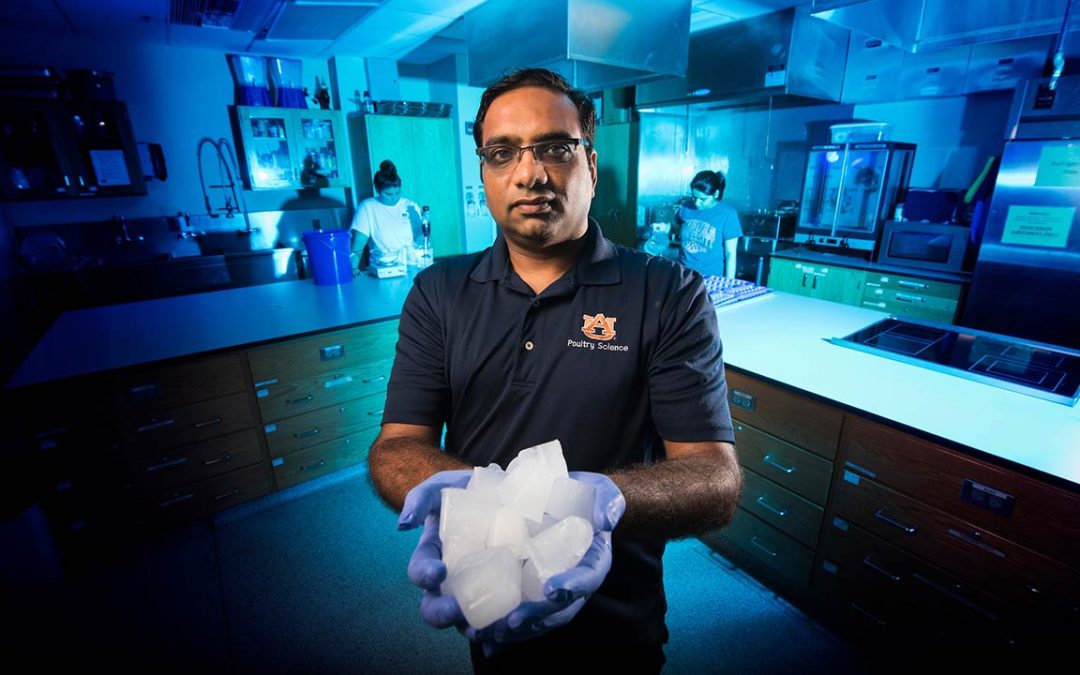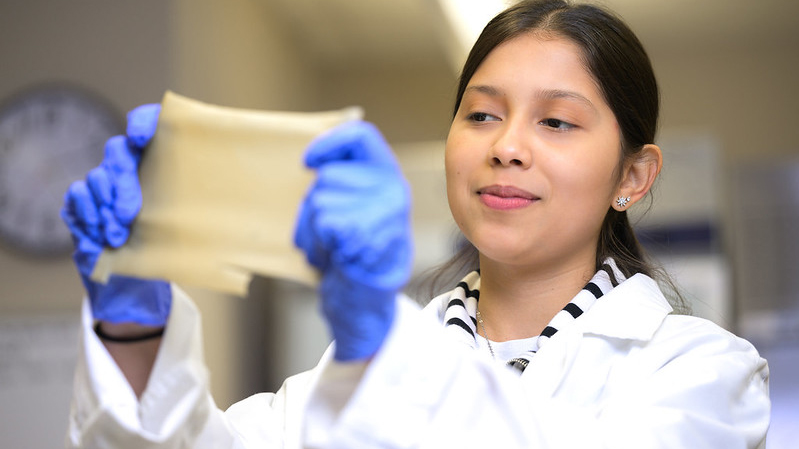by JAMIE CREAMER
After more than a decade of research into an increasingly common and costly broiler condition known as green muscle disease, a team of poultry scientists at Auburn University has identified a blood plasma enzyme that could give breeders a noninvasive tool to screen birds for susceptibility to the disease.
The plasma enzyme is creatine kinase, or CK, elevated levels of which signal muscle breakdown and damage. In humans, high CK levels in the blood can be indicators of heart attack, muscular dystrophy, acute renal failure and other serious muscle conditions. In broilers, they indicate the development of green muscle disease.
Green muscle disease—technically called deep pectoral myopathy—is a degenerative condition of broiler chickens’ minor pectoral muscles, or tenders, that results in discoloration of muscle tissue. The damage is not discovered until processing, and then it must be trimmed and discarded, costing the U.S. poultry industry an estimated $50 million a year in losses.
Auburn poultry science professor Joe Hess—who cooperated with departmental colleagues Sarge Bilgili and Roger Lien in conducting extensive research into the disease—says the condition is caused by sudden, excessive wing activity.
“Green muscle disease is an exercise issue,” Hess says. “If you have a house full of chickens and there’s a loud noise or water outage or some other environmental stressor, they’re going to get scared or agitated and start flapping their wings, and if it’s late in the growing season, that’s when the damage occurs.”
During wing movement, blood flow to the breast muscles, the major and minor pectorals, increases and the muscles swell. The problem is that, compared to the breast fillet muscle, the tender has a more rigid covering and is confined to a tighter space, and the swelling so compresses the muscle that the blood supply is cut off and the tissue bruises.
Early in their work on the condition, Lien developed a technique that he dubbed “encouraged wing flapping” to induce the condition in broilers for research purposes, and using that procedure, the poultry scientists have determined that broiler strains bred for higher breast meat yields, broilers marketed at heavier weights and, to a degree, male broilers are more likely to develop the condition.
Birds are also more prone to green muscle disease when temperatures are cool to normal, because those are periods of rapid growth, Hess says.
In their latest focus on the relationship between creatine kinase levels and deep pectoral myopathy development, the researchers found that plasma CK levels significantly rise from one to four days after encouraged wing flapping in birds that go on to develop the disease. Hess says that indicates that encouraged wing flapping and creatine kinase could be used in genetic selection programs to screen for green muscle disease susceptibililty.




